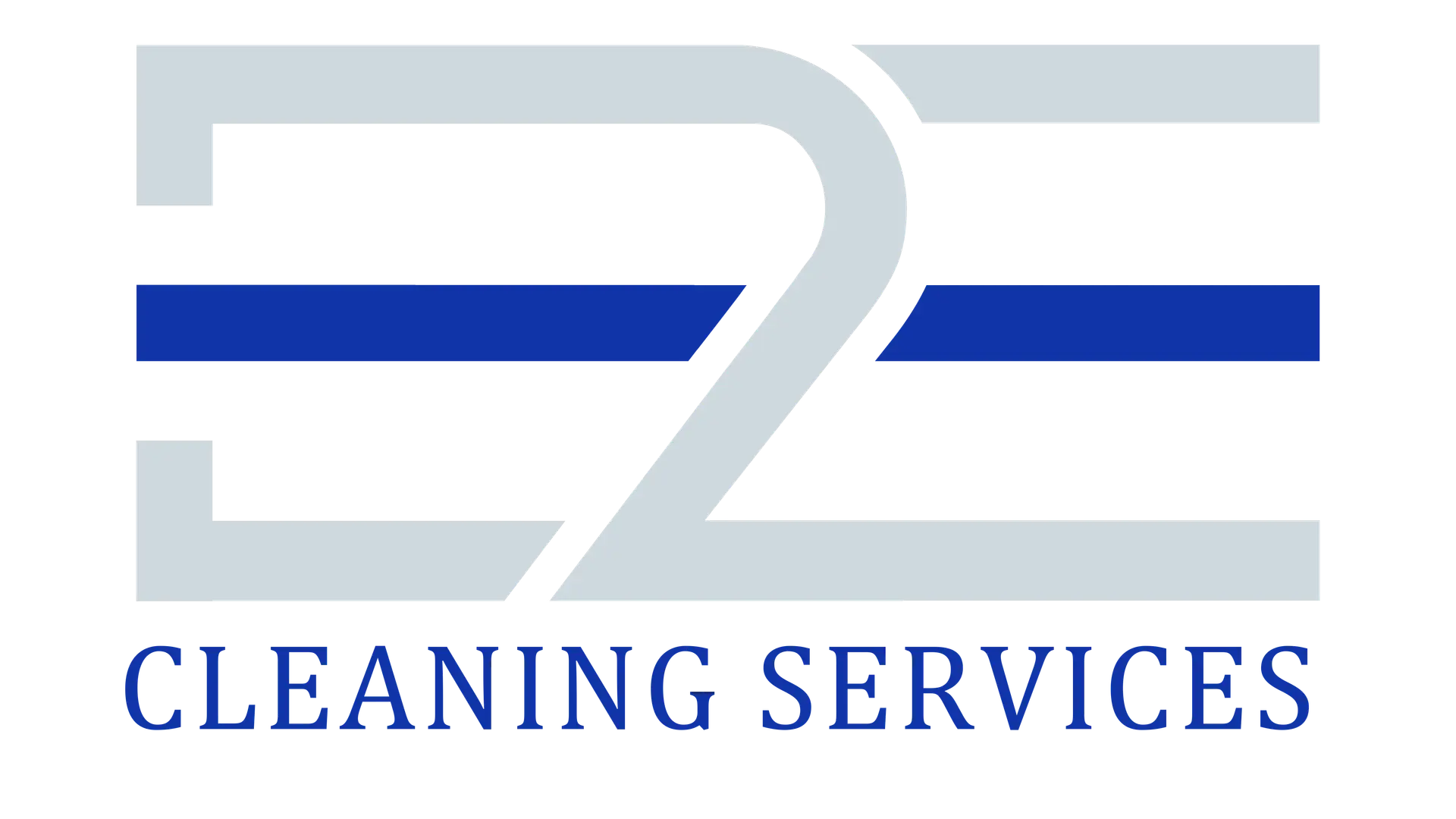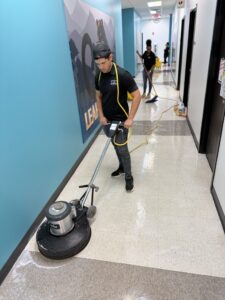During the summer months when tourism is at its peak, environmental conditions are at their most extreme, Florida businesses are faced with unique challenges.
This comprehensive guide offers facility managers and business owners strategic cleaning protocols to keep operations running at peak performance during Florida’s tough summer. With increased foot traffic, heat related cleaning concerns and everything in between, this checklist covers the essentials to keep your facility pristine, safe and appealing during peak season.
Introduction to Florida’s Peak Summer Season
For commercial facilities, Florida’s summer season is a perfect storm of operational challenges. During the months of June through September, when tourist numbers reach their annual high, businesses all over the state see a dramatic increase in foot traffic.
The influx occurs at the same time as Florida’s most extreme weather temperatures over 90°F, humidity over 90% and afternoon thunderstorms that can drop large amounts of moisture and debris.
These factors, when considered together, create a challenging environment in which conventional cleaning protocols need to be upgraded to more intensive methods.
Heavy use puts surfaces through more rapid deterioration, HVAC systems work overtime and moisture related issues such as mold and mildew have the perfect environment to grow. This is a critical time for facility managers, as enhanced cleaning strategies are now required, not optional.
According to tourism data, Florida sees about 35 percent of its annual visitors during these summer months, putting enormous pressure on commercial spaces. This concentrated demand is experienced by retail establishments, restaurants, hotels and entertainment venues, all of which must make strategic adjustments to cleaning schedules and methodologies.
The consequences of poor summer cleaning protocols go beyond immediate operational costs.
Cleanliness is consistently one of the top factors in customer satisfaction metrics and it is one of the top factors that influence repeat business and online reviews. In peak season, when there are plenty of alternatives to the consumer, impeccable facility conditions are a competitive advantage that directly affects revenue.
By understanding these intersecting challenges, facility managers can think of summer cleaning as more than an intensified version of year round maintenance, but as a specialized operational strategy that demands dedicated planning, resources and expertise.
Pre-Season Preparation Strategies
Successful summer season management is built on the preparation before peak tourism arrival. Pre-season planning for effective planning starts 4-6 weeks before anticipated visitor increase so that there is enough time to conduct systematic facility assessment and necessary upgrades.
Begin with a complete facility assessment on areas that are most susceptible to summer stressors. This involves looking at the condition of flooring in entryways, checking grout lines in restrooms for early mold signs and checking the functional capacity of air handling systems. Standardized assessment tool documents these findings by scoring each area on a 1-5 scale to establish a baseline to compare throughout the season.
Another important pre-season priority is equipment maintenance.
MERV- 13 or higher filtration systems are capable of handling more particulate load and coil cleaning, condensate line treatment and filter replacement are required for HVAC systems.
Cleaning equipment should be subject to preventative maintenance as well, vacuum motors serviced, carpet extractor pumps checked and floor machines calibrated for best performance during periods of heavy use.
Pre-season preparation is when inventory management becomes most important. Use past peak period usage data to set par levels for consumable products such as hand soap, paper goods and disinfectants. Industry best practice is to carry at least 30% more inventory during the summer months to meet increased consumption and protect against supply chain disruption.
Perhaps the most important pre season investment is staff training.
Create extensive training programs to help with summer specific problems:
- High-volume restroom maintenance protocols
- Heat-resistant disinfection procedures
- Quick-response cleanup for weather-related incidents
- Recognition and early intervention for moisture-related issues
Staff will conduct schedule simulation exercises in which they practice high volume cleaning scenarios with time constraints to reinforce efficiency as well as quality standards. Operational flexibility in the event of unexpected staff absences or demand spikes is created by cross training staff in multiple facility areas.
Lastly, define the communication protocol between cleaning teams and facility management. Anticipated visitor patterns are adjusted daily during briefings before shifts begin and end of day debriefings capture insights to inform continuous improvement.
Managing Tourist Influx Cleaning Demands
During peak season, the dramatic increase in facility usage requires fundamental changes to cleaning frequencies and methodologies. Both strategic scheduling and tactical execution changes are needed to effectively manage tourist related cleaning demands.
Particular attention is required in high traffic areas during peak tourist periods. The cleaning frequencies for entryways, the first impression point for visitors, are approximately three times higher than off season standards.
Schedule cleaning rotations of these zones every 90 to 120 minutes and clean floor surfaces, glass doors and reception counters. During peak periods, the commercial cleaning standard for entryway matting shifts from weekly extraction to daily, keeping tracked in debris from spreading throughout the facility.
One of the biggest operational changes during tourist season is restroom maintenance. During peak periods, cleaning frequency should be increased from twice daily to every 2 to 3 hours, according to industry benchmarks.
It should include this schedule:
- Door handles, flush mechanisms, faucets touchpoint disinfection.
- Soap, paper products and hand sanitizer (consumable replenishment)
- Moisture accumulation floor spot cleaning
To identify potential maintenance issues, fixture inspection should be performed.
Frequency adjustments are only one aspect of the problem; technical modifications to cleaning protocols are also required.
Microfiber systems should replace traditional mopping systems that remove 99.9% of surface bacteria and reduce moisture that can lead to slip hazards. For high-turnover environments, we can use fast-acting disinfection products that reduce wait times from 10 minutes to just 2-3 minutes while maintaining EPA-approved effectiveness.
During tourist influx periods, common areas are a challenge.
Zone based cleaning systems are implemented where staff have allocated specific responsibility areas instead of general tasks and accountability is increased and missed sections reduced.
Upholstered surfaces should receive particular attention as they can be home to large bacterial loads due to increased use. During peak season, commercial grade fabric sanitizers rated for high traffic environments should be applied daily not weekly.
During tourist periods, waste management demands increase dramatically, by 40-60% according to industry data. Collection schedules should be adjusted accordingly and high traffic areas may need to be checked hourly with restroom receptacles serviced with each cleaning rotation. We recommend training staff to identify when receptacles are approaching capacity and perform additional collections as needed, beyond the regular scheduled pickups.
Finally, area-based cleaning staff should be prepared to handle emergency cleaning demands. Spills or other immediate cleaning requirements can be addressed by designated staff members with appropriate tools, without disrupting scheduled rotations, maintaining continuity of core cleaning functions.
Need help staying clean and compliant this summer? Click Here
Heat-Related Cleaning Considerations
In addition to the challenge of increased visitor volume, Florida’s extreme summer conditions present unique defiances to cleaning operations. With temperatures consistently over 90°F and high humidity, everything from chemical efficacy to worker safety protocols is affected.
In summer months, cleaning product storage needs special attention. Commercial cleaning chemicals are often subjected to accelerated degradation at high temperatures which can reduce effectiveness or change safety profiles.
Create chemical storage areas for dedicated use with temperatures maintained between 60–75°F, far below the 90°F stability concern limit for many quaternary ammonium compounds and other disinfectants. Storage conditions should be logged continuously and alerts should be triggered when storage conditions exceed acceptable parameters.
Extreme heat conditions place worker safety in the forefront. Create a complete heat illness prevention program that consists of:
- Mandatory hydration schedules are 8oz water every 20 minutes.
- Air conditioned areas (15 minutes of cooling breaks per 2 hours of work)
- The scheduling was modified to be heavier tasks during cooler morning hours.
- Buddy systems in which workers watch out for each other for early signs of heat stress
For outdoor cleaning operations, work rest cycles should be based on heat index values, not temperature alone. Continuous work periods should be limited to 30 minutes when heat index is above 103°F, with 30 minutes of recovery in cooled environments.
Summer months bring operational to preventative HVAC system maintenance. Facility maintenance and cleaning teams should work closely together to address air quality issues, because increased occupancy, coupled with increased humidity, creates the perfect environment for bioaerosol buildup.
Monthly, not quarterly, enhanced air handler sanitization should take place, with special attention to condensate pans and drainage systems that can quickly become a biological growth haven.
Seasonal adjustment is necessary to product selection to deal with summer specific challenges. Humidity resistant formulations may be required for traditional floor finishes which may become tacky under high humidity.
Glass cleaners, too, tend to evaporate quickly in high temperatures, leaving streaks, while ammonium free formulations with slower evaporation rates are more effective in summer months.
A critical focus area is humidity control, especially in the areas of transition from the outdoor to the indoor environment. Commercial dehumidification units should be deployed in entryways and vestibules during times of highest humidity to keep relative humidity below 60% to prevent microbial growth and preserve surface integrity.
Standard entryway matting should be replaced with specialized moisture absorbing mats that are replaced more frequently to maintain their effectiveness.
Finally, develop improved moisture related monitoring protocols, including daily inspection of areas that are typically vulnerable to moisture including baseboards, ceiling tiles adjacent to HVAC vents and wall surfaces in restrooms. The sooner you intervene at the first signs of moisture accumulation, the less likely you will need more serious remediation.
Comprehensive Summer Cleaning Checklist
Summer cleaning protocols need to be systematically implemented and this requires a structured approach with specific tasks by frequency. This comprehensive checklist gives facility managers an executable framework to maintain peak season conditions.
Daily Essential Tasks
The first step to every successful summer cleaning program is consistent daily execution of foundational tasks. EPA registered products with appropriate dwell times are used to disinfect high touch surfaces multiple times per day. Door handles, elevator buttons, payment terminals and shared equipment in commercial areas are included.
For areas subject to health department scrutiny, completion timing should be confirmed by documentation logs.
Standard mopping isn’t enough to maintain your flooring. Put in place a three step system, debris removal using microfiber dust mopping, spot cleaning of visible soiling and disinfection with quaternary ammonium or hydrogen peroxide based products appropriate for the specific flooring material. Special attention should be paid to transition areas where outdoor debris concentration is generally observed.
Comprehensive daily protocols are needed for restroom sanitation which include:
- Fixture disinfection (toilets, urinals, sinks)
- Touchpoint sanitization (flush handles, faucets, door hardware)
- Consumable replenishment
- Floor disinfection with hospital-grade germicidal cleaners
- Drain treatment with enzymatic cleaners to prevent odor development
Summer months become increasingly important for air quality management. Particulate accumulation on HVAC return grills should be inspected and cleaned daily and portable air purification units in high occupancy areas should have their filters inspected and replaced as needed based on particulate loading rather than time intervals.
Weekly Deep-Cleaning Requirements
Areas where more intensive cleaning interventions are needed beyond daily maintenance are addressed in weekly protocols. In high traffic areas, carpet extraction should be done with low moisture methods using equipment that recovers 90% of the moisture to prevent humidity problems.
Bioburden accumulation from increased foot traffic is addressed with enhanced extraction techniques using pre-treatment enzymatic cleaners.
Specialized cleaning agents formulated for high humidity environments are needed to clean glass and reflective surfaces throughout facilities on a weekly manner. Application techniques should consider accelerated evaporation and microfiber systems rather than paper products should be used to minimize streaking potential.
Daily maintenance is only part of restroom deep cleaning which also includes:
- Use of non-acid cleansers for descaling of fixtures according to facility water hardness levels
- Hydrogen peroxide based cleaners and mechanical agitation grout line sanitization
- Disinfect all parts of the partition including edges and connection points
- Cleaning of exhaust fan to extract proper humidity
Weekly intensified protocols are needed for kitchen and food service areas which focus on:
- Grease accumulation removal from hood system exterior
- Sanitization of walk in refrigerator, especially door gaskets and floor transition areas
- Bioenzyme products used to treat floor drain to remove organic buildup
- Cleaning behind equipment to remove accumulated debris in hard to reach places
Monthly Maintenance Priorities
More complex systemic issues are handled through comprehensive monthly tasks. HVAC system maintenance becomes especially critical during summer operations, requiring attention:
- EPA registered biocides applied to condensate pans
- Proper heat exchange and dehumidification by cleaning the coil
- Replacement of filters with documentation of MERV ratings appropriate for facility requirements
- Early identification of microbial growth by duct inspection at accessible points
During high traffic, floor finish maintenance needs monthly attention. Instead of traditional burnishing, use a scrub and recoat system on highest wear areas. This method increases finish longevity while addressing soil load embedded from increased traffic volume.
Summer months are especially important to building exterior maintenance which is often overlooked. Biological growth accelerated by humidity is removed by monthly power washing of entryways and pedestrian paths.
Rainwater channeling that might affect interior cleanliness is avoided through particular attention to canopies and overhangs.
Finally, waste handling areas are monthly deep sanitized to prevent pest activity and odor development. Enzymatic cleaners, commercial grade, applied to dumpster surrounds and chute systems, deal with organic residue that attracts pests that are active during the summer months.
This structured approach to cleaning frequency holds people accountable and guarantees that all facility areas are getting the right attention at peak operational times.
Conclusion
Managing Florida’s peak summer season is a multifaceted commercial cleaning challenge which includes increased facility usage and unique environmental challenges. With comprehensive pre-season preparations, modified cleaning protocols for tourist volumes, heat related considerations and structured maintenance schedules, facility managers can keep these conditions at their peak during this demanding time.
Proper summer maintenance has financial implications beyond immediate customer satisfaction to include long term facility preservation, equipment longevity and reputation management. Investing strategically in the right cleaning resources during peak season provides a high return on investment in the form of better customer experience and lower cost of remediation for deferred maintenance issues.
Commercial facilities in Florida confront unique challenges that require specialized knowledge and forward thinking management. With this extensive summer cleaning checklist, businesses can position themselves to succeed during peak season and safeguard their physical assets while boosting their competitive edge in Florida’s ever changing business environment.






